- Home
- Tony Hillerman
Seldom Disappointed: A Memoir Page 22
Seldom Disappointed: A Memoir Read online
Page 22
I can take no credit for that coup but retelling it reminds me of how bad it feels to be the victim instead of the victor. In this case the scooper was Mary Goddard, a charming little lady with the Daily Oklahoman. Two children of a prominent couple had been savagely murdered in the small Oklahoma town of Pauls Valley. The police were silent. Those of us covering had only a rumor that a woman was being held in the tiny county jail. While the rest of us were trying to worm information out of cops and jailers, Mary entered a bar, drenched herself with beer, and became disorderly enough to be arrested and tucked into the lockup’s only cell for women. She bonded out with an exclusive interview —the family’s baby-sitter described the gruesome affair while they were cellmates. (The Daily Oklahoman, true to its prohibitionist leanings, refused to pay for the beer listed on her expense account.)
The gruesomeness of that crime reminds me of another coup—a mid-century torso murder case in Oklahoma City in which a tip from a cop provided a break on the victim’s identity. The body had been known by the media only as a teenaged female with “RAT” carved into her bosom—the killer having disposed of her arms, legs, and head. (I digress here to illustrate the difference between the UP [Untidy Press] and the AP [Grandma] in those days. My story had said: “‘RAT’ was cut in the girl’s bosom.” The AP story said: “The initials ‘r.a.t.’ had been cut in the victim’s chest.” Conclude from that what you will.) Days later came another tip. A driver saw a head floating under a bridge. A quick call to a friendly fellow in the coroner’s office and we were out with a bulletin. Our teenaged victim became a middle-aged woman and we were way ahead of AP with the story.
There’s a footnote to that. Weeks later another head turned up—this one of a teenaged female. By then it didn’t matter. I had been transferred to New Mexico. Let Bradley deal with it.
In Santa Fe my yen to become a novelist grew stronger. The UP Bureau was just up the street from where Territorial Governor Lew Wallace had written Ben Hur. Across the parking lot in the newsroom of the New Mexican, Oliver LaFarge, whose Laughing Boy had won the Pulitzer Prize, was a columnist. The book review editor’s Scrimshaw had won the National Book Award for poetry. A reporter who regularly sold his short stories to The New Yorker had just left, and people who lived by literature could be seen on the plaza, at the grocery, even in the jail drunk tank. All things seemed possible. I started writing short stories, collecting those painful rejection slips, and dreaming about writing the Great American Novel. But on the family front good (albeit distracting) things were happening.
20
Janet, Tony, Monica, Steve, and, Finally, Dan
When destiny ruled that Anne was the only offspring nature would provide us, Marie and I decided to finish building our family by adoption. We were healthy homeowners without criminal records who drew no gender or racial lines. Since official sources announced a surplus of kids and a shortage of would-be adoptive parents, it sounded easy.
It wasn’t. Being a political reporter when we started this exhausting process, I guessed it was an attitude problem. Social workers were looking upon themselves as shepherds, the kids in their custody as sheep, and would-be parents the ravening wolves circling their flock trying to snatch away their lambs.
We first applied in Oklahoma City. There Marie’s kindly notion that adoption agencies would look upon us as allies was shorn away. We left for New Mexico and filed a new set of applications in Santa Fe. Maybe things would be better there. They were, but not right away.
I was covering the State Capitol and made it a point to focus on the Department of Public Health, custodian of child welfare services. Since the Pill was not yet in universal use and practice of bumping off unwanted sons and daughters pre-birth had not yet been legalized, there was a good supply of kids and a serious need for parents. But the supply of babies was dropping by then and the social workers seemed to see themselves as car dealers with the United Auto Workers on strike and the show rooms being emptied. If they surrendered the kids in their custody to parents, with no new supply coming, they’d put themselves out of work.
Marie still thought my theory too cynical, presuming the adoption bureaucrats were trying to protect the kids from pedophiles and neurotics who thought adoptions would save a shaky marriage. Maybe she was right. Because after months of braving hostile suspicion and smiling our way through various interviews, reference checks, and home inspections, the call finally came.
We rushed down to Albuquerque and met Janet, a petite dark-haired girl of nine months, and were allowed to take her home. Janet wailed relentlessly for three days and three nights before she decided to accept her fate, and then settled happily into a role as baby sister. Meanwhile, Marie, Anne, and I worried about whether they would let us keep her? They would.
With our credentials now established (and a kinder-gentler bureaucrat in power) things got much easier. We managed to add another daughter and two sons to our flock in four years. The first of these was a plump blue-eyed, bald-headed boy whom Marie described as “bewitching.” He became Anthony Grove Hillerman, Junior. Tony came with a full and active set of allergies, including aversions to such common stuff as dairy products, wheat products, cats and dogs, etc. Despite that, he was sort of a stoic—smiling through sniffles, rarely crying, happy to entertain himself if anything was in reach that he could pretend had a motor in it, and cheerfully accepting supervision by Anne and Janet.
Next came Steve. He was even skinnier than Janet had been and it was easy to see why. Steve was an infantile model of perpetual motion and a baby insomniac. Even now, half a lifetime later, with a tour on a U.S. Navy frigate behind him, I doubt if he’s ever missed seeing a sunrise.
Monica was already her own woman when we landed her, a sturdy three-year-old when the welfare people surrendered her to our custody. She had beautiful brown eyes, a charming smile, a four-inch lift built under one shoe, a complicated leg brace, and came with a dire warning. The medical prognosis we received explained that the bones of Monica’s short leg lacked a fibula and the usual growth centers. Thus as the good leg grew the shoe lift would have to be repeatedly increased to compensate—eventually to be replaced by crutches and then by a wheelchair.
Along with this disability, the Good Lord had given Monica a remarkably efficient immune system, unusual tolerance of pain and an independent spirit—a product perhaps of being moved from one foster home to another since birth, with long periods spent in hospitals. Hospitals, in fact, seemed to be her favorite residence, and homes merely places she stopped off between them. It took a year or so for Monica to conclude that we were her permanent Mom and Dad and maybe she should settle in.
With Monica we closed the books on adoption. Three daughters and two sons seemed about right. A bit later I quit the New Mexican and was making the sixty-mile commute down to the UNM campus in Albuquerque while Marie scouted for houses there large enough for seven of us, and near enough for Monica to walk to school until wheelchair time arrived. We found a “fixer-upper” across a vacant lot from a grade school with a full basement adaptable for kids. We moved down from Santa Fe to Albuquerque, from 7,200 foot altitude to 5,200 feet and 65 miles closer to the Carrie Tingley Crippled Children’s Hospital. That was significant. We’d discovered that researchers had developed a way to stretch leg bones that refuse to grow and a young doctor practicing at the C.T.C.C.H. had learned the process.
The C.T.C.C.H. then was located in Truth or Consequences which, despite our move, was still a weary 160 miles down the Rio Grande—a drive we had memorized before this treatment was finished and Monica was home again to stay. It began with careful measure of bone lengths and some scientific guesswork at Monica’s eventual natural height. When the optimum natural bone length was reached in the good leg, the surgeon stopped its growth. The short leg was fastened into a rack and meticulously broken to avoid damage to the sheath of tissue which covers it. Pins were put through the bone above and below the break and attached to a turnscrew. When the break had almost h
ealed, the screw was turned, the break was widened and left to heal again. It sounds like torture technique from the Tower of London but it worked. She gets around fine with a hardly noticeable special shoe.
We thought we’d moved to Albuquerque with the family complete but it was not to be. The social workers couldn’t seem to get Monica’s records right. That led to a trip to their downtown office to make sure corrections were made. There we met Daniel Bernard Hillerman. Those who don’t believe in Divine Providence, as do Marie and I, would call it an accident.
The office manager was making a pitch to recruit us as a temporary foster home. To illustrate the acute shortage she described one the agency was closing because the woman operating it was neurotic. Only two little boys were left there now. Arrangements were made for one and the other was in limbo because of an undiagnosed health problem. Would we like to meet him?
We would. He clung fearfully to the leg of the woman who brought him in for the introduction, a handsome toddler who, once we had seen him, had no chance of escape. A second visit was arranged and we took him home.
A sympathetic caseworker on a home visit suggested the undiagnosed illness which had kept Danny off “ready for adoption” list was caused by neglect. She said he’d lived his two years in the solitary confinement of a playpen, with no one talking to him, holding him, or playing with him. Do I exaggerate? Our lawn was the first grass he’d ever walked on (scary at first), and the world outdoors in general was new and awesome. A few weeks later we rented a foldout trailer and took the kids for a mountain campout. It rained, of course, and the night was cold enough to motivate Daniel to speak his first words to us. “More bankey,” said young Dan, and was rewarded with an extra blanket.
Danny rewarded us in return by being incredibly reliable. For example he had to wear an eyepatch to correct cross-eyes. Having worn one myself for many an unpleasant month while my injured left eye healed I couldn’t believe a three-year-old would wear one. Danny did, and without complaint until the problem was cured. But this reliability led me into the most terrifying evening of my life. When he was thirteen I took him (by then a fervent fisherman) and his friend, Steve Langdon, to the Chama. While I was rigging up my flyrod, untangling the line, etc., the boys rushed off to the river and waded across to Danny’s favorite spot. When I got to the bank I was aghast. Spring runoff had started early. The Chama was high and rising. By shouting back and forth over the roaring torrent, they told me they had barely made it without being swept away. I told them to stay put. I’d find a safe way to retrieve them. The nearest bridge upstream was miles up the Chama canyon. Downstream was the Heron dam, which a local fisherman said would require only a two-mile walk down the river. I told the boys to walk down to the dam while I drove back to the bridge and then circled back to pick them up. I was a little uneasy about it, but Danny would use his head and do nothing dumb. It was a long circular drive to Heron and I expected the boys to be at the dam waiting when I got there. They weren’t. I climbed down to the stream and began working my way up to it. The river was higher now—a roaring torrent—going was hard, my bad leg was showing the strain, and it was getting dark. Maybe I had missed them somehow. I climbed back to the rim, found another local citizen and told him my problem. He told me the walk from where they’d started to the Heron Dam was about ten miles, not two, and probably impassable with the river this high. He used his CB radio to call the Game Department for a search party. I climbed back down the dam fence, made another effort to get upstream, found it impossible in the dark, and climbed out. It was totally black now. I was exhausted. My newfound friend’s radio was dead but he’d wait here in case the boys showed up. I sped off, fueled by dread and fighting off panic, seeking a house connected to a telephone pole. I finally found one. The owner let me use it to call Marie while he got the Game people on his own CB radio to arrange the search party. I’d tell her I had lost the boys in the Chama canyon, ask her to call Steve’s parents (probably wondering why their boy was late) and assure them that there was no need to worry. While this was Steve’s first fishing trip, Danny was an old hand at river canyons. He’d find them a safe place to spend the night, build a fire, etc.
I dialed. Marie would be cool, I knew, all the way through this. The search for the drowned boys, the finding the bodies, the whole horrible affair. The telephone rang, Marie’s voice saying “Hello.”
“Marie, I have some—”
“Tony, I’ve been trying to find you,” said she. “Danny just called and—”
DANNY JUST CALLED!! Imagine if you can an instant transition from the black despair to total joy. Danny and Steve had hit a place where downstream movement was impossible and were looking for a place to spend the night. A fisherman on the opposite bank saw them, directed them to a Ponderosa which had fallen partly across the river and then waded far enough out to get them across. He asked where they were to meet me. At the dam, they told him. He took them to El Vado dam, miles away. From there Danny called Marie.
Danny was the last addition. He’s a pharmacist now, the doting dad of his own son and daughter, and still a fisherman. Monica, her leg stretched to full utility, provided us with four granddaughters, Steve did a Navy stint in the Pacific, drove 18-wheelers, worked in cable TV, is now fathoming computer programming, remains a bachelor, and stalks the streams and lakes of New Mexico in search of the wily trout. Tony, Jr., maintained his childhood focus on things mechanical and is a technician with American Airlines, proof that genetic blessings aren’t erased by conditioning.
Tony had an incredible ability to understand how things work and to fix them. By junior high, my contribution to home maintenance was restricted to showing him the problem, fetching the tools. For example, I lost a section of The Blessing Way in the bowels of my new Radio Shack computer. Company technicians weren’t able to help. Tony, 15 at the time, volunteered to try. That was a generation before kids cut their teeth on computers and Tony had never been around one. He nagged me into remembering every key I had struck before the disaster, considered this, and devised a complex reverse formula which forced the TRS 80 to print out the missing prose. He and his lovely wife, Lori, have a cat, dog and two horses.
Anne has added a grandson to the family, did tours with the UPI and two newspapers, and now does technical writing, has three non-fiction books to her credit, and helps her husband run a public relations operation. Janet and her husband contributed two grandsons and a granddaughter. She cut off a career in art to concentrate on perfecting them—although I did get her to illustrate my only children’s book.
Before we leave this subject and move into the odd world of academia, Marie and I hereby submit our answer to the universal question of those considering adoption. The question concerns parental love for kids you haven’t produced yourselves. The answer is don’t worry about it. As veterans of raising both kinds we can testify that all of them provoke affection, irritation, worry, joy, dismay, care, pride, anger and, most of all, love. Each and every one of them is our child. Don’t try to tell us they had another set of parents. Nor need you worry about adding adoptees into an existing family. Each of our five was greeted with excitement and enthusiasm and had to tolerate being mothered and big-brothered by the siblings they’d joined.
To pursue this sales pitch further, I will report that Barney and his wife Irene had a similar experience. They adopted Carl, Eric and Lucy who formed a happy functional gang, won various kinds of college scholarships and now operate successful families of their own. The same kind of business went on in Marie’s side of the family. Happy adoptions everywhere you look, with the latest being Margaret Teresa, collected by out niece Susan McDermott and husband Pat.
For another viewpoint on these issues, I will borrow the article which follows, written by Anne for the Albuquerque Journal.
THE SUNDAY JOURNAL
* * *
Adopted family very real
Suddenly, there were six stockings to fill, not just one.
BY ANNE HILL
ERMAN
For the Journal
Holidays mean family, at least to most people. If we’re not celebrating with our parents, children, or siblings, we’re remembering when we did.
Because there were six children in my family, the holidays always brought joyful chaos to our house. Or maybe they just amplified the chaos that was already there.
Realizing that there wasn’t much difference between us and our friends’ families—at Thanksgiving, Christmas, or any other time of year—we Hillerman kids made it a point to let people know that everyone but me was adopted.
As my parents’ first child and the initial grandchild, I spent my earliest years in Oklahoma surrounded by adults who considered me an angel sent to Earth for the sole purpose of receiving their undivided attention. I’m sorry I was too young to recall my first Christmases; life must have been sweet.
Then, when I was about three, we moved to Santa Fe. Shortly thereafter, the adoption of my first sister, Jan, displaced me as the family princess.
My parents said, “Congratulations. You’re a big sister.” Tony, Monica, Steve and Dan followed and before long there were six Christmas stockings—all the same size—under the tree on Christmas Eve.
My parents stressed to Jan, Tony, Monica, Steve, and Dan that their adoption made them special, much loved, chosen children. They continually reminded me that, as biggest sister, I had to set a good example for this crew. Until I got to be twelve or so, I liked the big-sister business. We had fun. We had fights. We made each other presents and took them back. We loved each other to pieces and got so mad we could hardly stand it.
Then, swept away by the hormonal hurricane of adolescence, I decided I would have been happier as an only child. I could have had a pony for Christmas, I fantasized, if my parents hadn’t had so many other gifts to buy. In fact, I would have gotten all the presents, and, even better, all the attention. I pictured my young self as a pirate standing over a chest of golden love tokens, the family treasure, gloating, “All mine. All mine.”

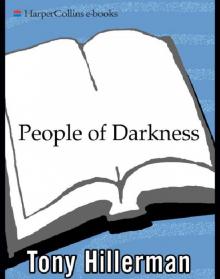 People of Darkness
People of Darkness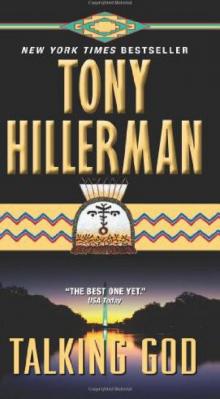 Talking God jlajc-9
Talking God jlajc-9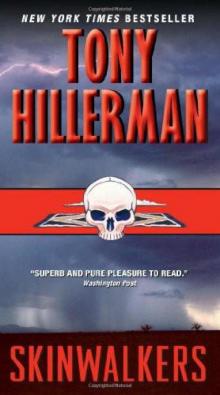 Skinwalkers jlajc-7
Skinwalkers jlajc-7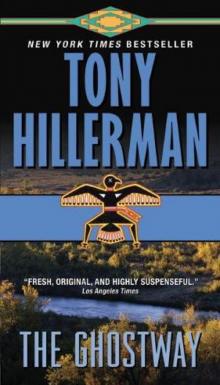 The Ghostway jlajc-6
The Ghostway jlajc-6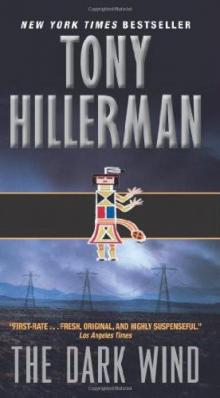 The Dark Wind jlajc-5
The Dark Wind jlajc-5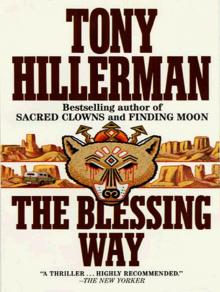 The Blessing Way
The Blessing Way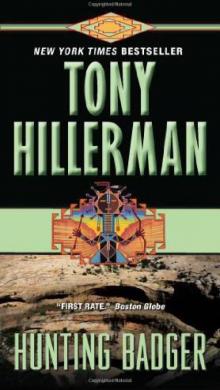 Hunting Badger jlajc-14
Hunting Badger jlajc-14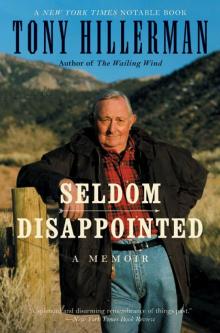 Seldom Disappointed: A Memoir
Seldom Disappointed: A Memoir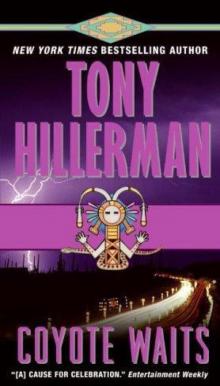 Coyote Waits jlajc-10
Coyote Waits jlajc-10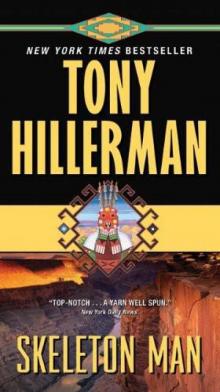 Skeleton Man jlajc-17
Skeleton Man jlajc-17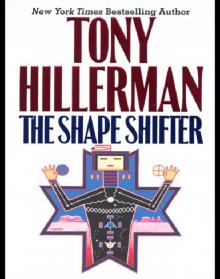 The Shape Shifter
The Shape Shifter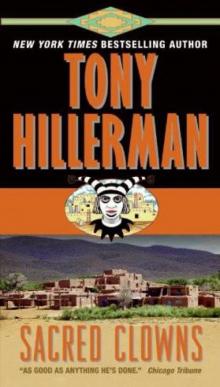 Sacred Clowns jlajc-11
Sacred Clowns jlajc-11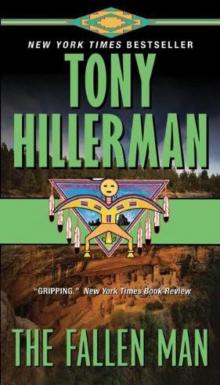 The Fallen Man jlajc-12
The Fallen Man jlajc-12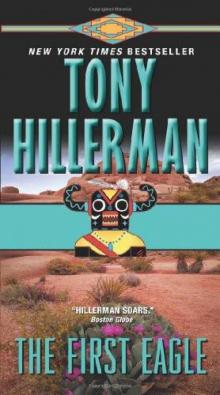 The First Eagle jlajc-13
The First Eagle jlajc-13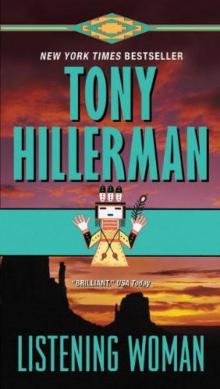 Listening Woman jlajc-3
Listening Woman jlajc-3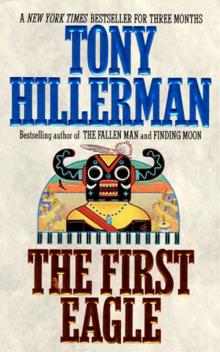 The First Eagle
The First Eagle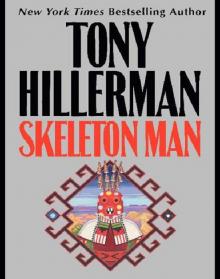 Skeleton Man
Skeleton Man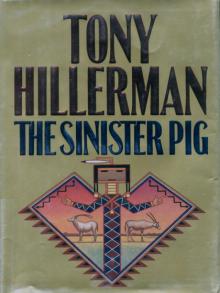 The Sinister Pig jlajc-16
The Sinister Pig jlajc-16 People of Darkness jlajc-4
People of Darkness jlajc-4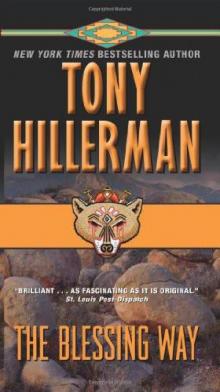 The Blessing Way jlajc-1
The Blessing Way jlajc-1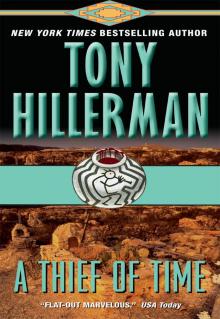 A Thief of Time
A Thief of Time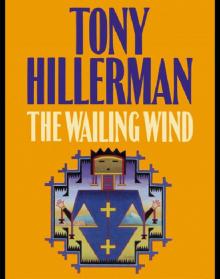 The Wailing Wind
The Wailing Wind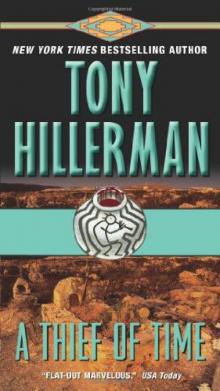 A Thief of Time jlajc-8
A Thief of Time jlajc-8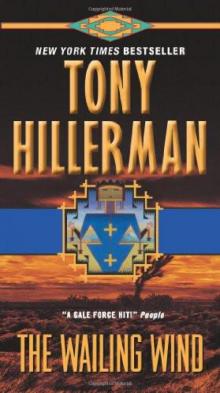 The Wailing Wind jlajc-15
The Wailing Wind jlajc-15 The Shape Shifter jlajc-18
The Shape Shifter jlajc-18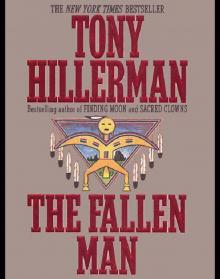 The Fallen Man
The Fallen Man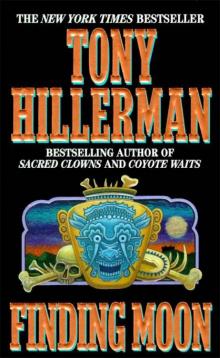 Finding Moon
Finding Moon